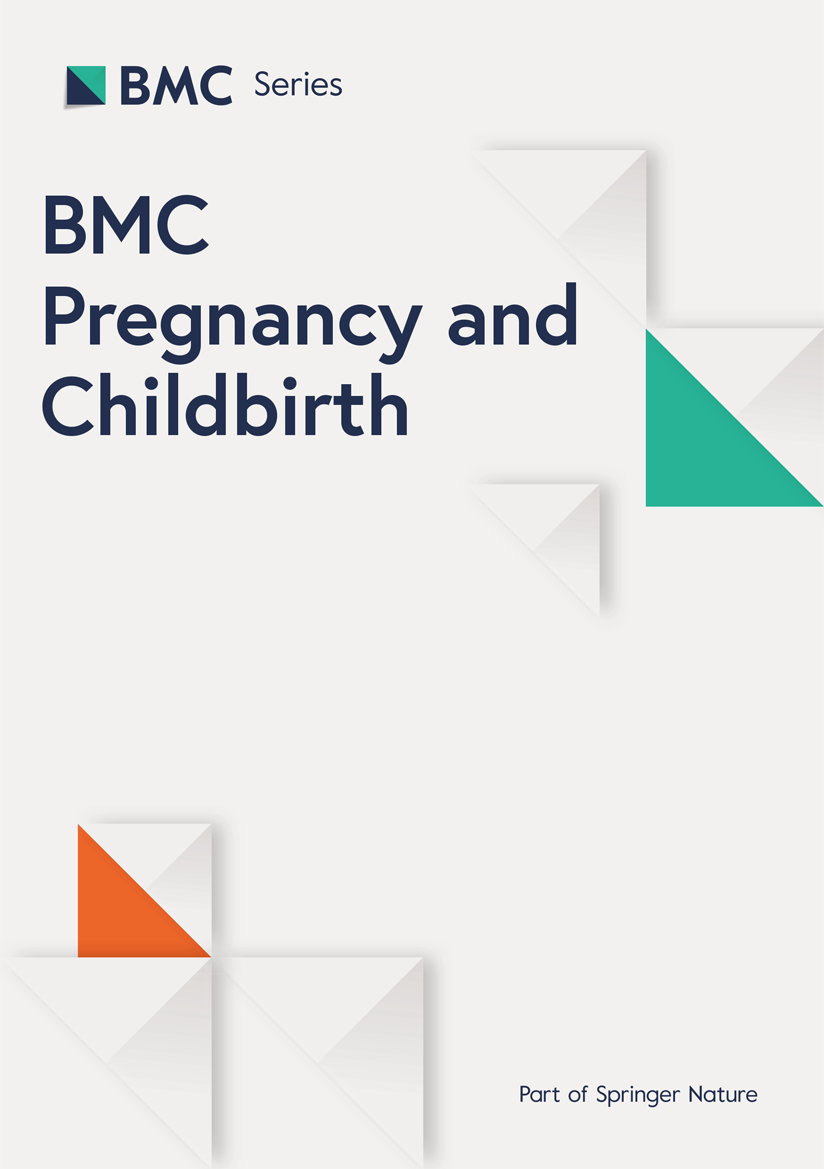Annals of General Psychiatry volume 24, Article number: 37 (2025) Cite this article
Suicide has become one of the leading causes of death in adolescents and is a direct consequence in patients with depressive disorders. Recently, neuroinflammation has been shown to play a role in the development of depression. This study examined serum chemokine levels in adolescents with depressive disorders at different suicide stages to identify chemokines that discriminate between suicidal behaviors. This study enrolled 111 adolescent patients with depressive disorders who were further subdivided into three groups based on the presence of suicidal behavior or ideation: suicide attempt group (n = 45), suicidal ideation group (n = 44), and non-suicidal depression group (n = 22), along with 23 healthy controls. Eight inflammatory chemokines were detected using the mesoscale discovery method. Patients in the suicide attempters group had higher levels of IL8, MCP-1, Eotaxin, and Eotaxin-3 than those in the non-suicide depression group. Eotaxin-2 had the greatest effect on suicidal behaviors of all factors.
Depression is a chronic psychosomatic disorder that seriously affects social functioning. The etiology of depression remains unclear, and it is a disease in which various genetic, psychosocial, and biological factors come together. Suicide is a serious health problem and a leading cause of death worldwide [1]. This is one of the consequences for individuals with mental illnesses [2]. More than half of all suicides occur in individuals with depression [3]. In the case of suicidal patients, it is equally important to treat their underlying depressive disorder. Of all the antidepressant medications, duloxetine has excellent efficacy in acute adult MDD and can be used to treat patients with depression [4]. A meta-analysis of Chinese patients with major depression revealed worrisome trends with overall lifetime prevalence rates of 53.1%, 17.5%, and 23.7%, respectively [5]. One study involving 69,519 Chinese adolescents found that 13% had thought about suicide, and 4.8% had attempted suicide in the previous year [6]. These figures are comparable to those reported in previous studies on Western adolescents [7]. These studies have consistently found high levels of suicidal intent among adolescents, confirming that suicide in this group requires attention [8].
Assessment of suicide risk is an essential task in clinical psychiatry and is a significant determinant of subsequent treatment choices and grading of care. Some studies have estimated that 20 or more suicide attempts occur [9, 10]. To date, suicide risk assessment has been based solely on clinical evaluations, leading to subjective interpretations and decisions by psychiatrists. Furthermore, patients’ concealment of their condition can lead to failure of suicide risk assessment. However, suicide is a multifactorial problem involving clinical, genetic, and neurobiological risk factors. Therefore, tools are urgently needed to assist in the assessment of suicide risk using biological information rather than relying on patient descriptions, presentations, and physicians’ subjective decisions.
Although the underlying mechanisms are not fully understood, inflammatory processes have been reported to play a role in the development of mental illnesses, especially depression [10,11,12]. Additionally, the role of inflammation was noted in a study on bipolar disorder; the mean values of neutrophils, platelets, mean platelet volume, Neutrophil-to-lymphocyte, platelet-to-lymphocyte, and monocyte-to-lymphocyte were significantly higher in (hypo)manic individuals than in depressed individuals [13]. Evidence shows that suicidal individuals have altered levels of inflammation, particularly the pro-inflammatory cytokines TNF-α, IL-6, and IL-8 [14, 15].
Neuroinflammation is a broad concept involving innate immune responses in the central nervous system (CNS) [16]. Microglia are key cellular mediators of the innate immune system in the brain. Microglia activation is a central component of neuroinflammation and is thought to affect neuronal growth, differentiation, and function. Aberrant interactions between microglia and neurons may lead to various psychiatric symptoms [17]. Activated microglia produce cytokines and chemokines that affect synaptic plasticity, neurotransmitter metabolism, and neural circuits associated with mood regulation [17, 18]. Furthermore, under chronic stress, astrocytes alter blood-brain barrier permeability and produce high levels of chemokines, such as CCL2, which induce the leakage and infiltration of immune cells, such as macrophages and monocytes, from the circulation [19, 20]. Induced macrophages and monocytes also produce cytokines and chemokines that contribute to neuroinflammation. Finally, chronic exposure to elevated cytokine levels contributes to the development of psychiatric disorders [21].
Previous studies focused on the roles of cytokines. Chemokines, which are small-molecule cytokines, are directly involved in the wandering and activation of leukocytes, especially phagocytes and lymphocytes, which activate the inflammatory response and play a central role. Evidence has shown that chemokines are associated with depression. This is based on studies of patients who are depressed [22] and suicidal [15]. Blood IL-8 levels were significantly higher in patients with depressive disorders, whereas the a decrease in IL-8 levels in the cerebrospinal fluid of patients with suicidal ideation. Some animal studies have shown that the use of chemokines in animals leads to disease behavior [23]. For example, administering the endotoxin lipopolysaccharide (LPS) to animals leads to the release of chemokines and produces symptoms of disease behavior that may be similar to depression [24]. Chemokine receptors play a role in cognition, learned behaviors, anxiety, and other behaviors [25]. They are also responsible for regulating inflammatory responses and controlling interactions between the immune system and the CNS. These include neuromodulator actions, direct neurotransmitter-like actions, regulation of the neuroendocrine axis, control of blood–brain barrier (BBB) permeability, regulation of neurogenesis, neuroprotection, regulation of axon germination and elongation [26], and involvement in other brain functions [27].
Therefore, aimed to identify differences in inflammatory chemokine levels across various stages of suicide, especially suicidal behavior, by exploring serum inflammatory chemokine levels in 111 hospitalized adolescents with major depression. These patients were categorized into three groups: those without suicidal ideation or behavior, those with suicidal ideation, and those with suicidal behavior. Additionally, we explored chemokines that significantly impact suicidal behavior. The inflammatory chemokines analyzed included IL-8, IP-10, MCP-1, MCP-2, Eotaxin, Eotaxin-2, Eotaxin-3, and Fractalkine.
This study was approved by the Fourth People’s Hospital of Hefei (review number: HSY-IRB-PJ-XJJ-ZH002). All participants signed an informed consent form based on the Declaration of Helsinki before the start of the study. Further, their families were fully informed of the possible risks of the study before signing the informed consent form.
The participants were patients with depressive disorders who were hospitalized between August 2019 and April 2021 in the Department of Child and Adolescent Psychology at the Anhui Mental Health Center (Hefei No. 4 People’s Hospital).
The inclusion criteria were as follows: (1) meeting the ICD-10 diagnostic criteria for depressive disorders (patients with depressive disorders included in this study were hospitalized, and the ICD-10 is the most commonly used clinical diagnostic criteria in China) ; (2) Han nationality; (3) aged 13–18 years; (4) no MECT (modified electroconvulsive therapy) treatment in the last 6 months; (5) never used antidepressants or drugs known to impact cognitive function, or has used related medications but are currently off them for more than 2 weeks; (6) no infectious diseases such as colds or fever or use of related therapeutic drugs in the last 2 weeks; (7) no use of immunosuppressants or drugs known to impact immune function in the last year; (8) normal blood test, liver and kidney function, and electrocardiogram results; and (9) patients and their parents provided informed consent to participate in the study.
The exclusion criteria were as follows: (1) severe somatic or organic brain disease, (2) comorbidity with other mental disorders, (3) history of severe alcohol or drug abuse and addiction, and (4) transient mania within one month of follow-up.
Healthy adolescent students from two general middle schools in Hefei City, China, were recruited simultaneously and matched with patients with depressive disorders in terms of age, sex, and education level. The inclusion criteria for this group were as follows: (1) Hamilton Depression Scale-17 (HAMD-17) score < 7, (2) no family history of neurological or psychiatric diseases, (3) no suicidal behavior or family history, (4) no major physical illness, (5) no infectious diseases such as colds or fever or use of related therapeutic drugs in the last 2 weeks, (6) no use of immunosuppressants or drugs known to impact immune function in the last year, (7) no significant hearing or a visual impairment, and (8) participants and their parents provided informed consent to participate in the study. The exclusion criteria were the same as those used for patients with depressive disorders.
A total of 136 participants met the inclusion criteria and were included in this study. After enrollment, patients with depressive disorders were classified according to the Columbia Classification Algorithm for Suicide Assessment (C-CASA). This study defined a suicide attempt as an unsuccessful attempt to end one’s own life using self-injurious behavior. Where the evidence of the individual’s suicide attempt is apparent or can be inferred from their behavior and situation, and where a history of suicide attempts is documented by their parents, guardians, and supervising physicians.
The study participants were diagnosed and screened by two attending and specially trained psychiatrists, who explained the purpose and significance of the study and conducted appropriate assessments and scales. All the researchers involved in the evaluation were trained on the internal consistency of the scales before starting the study.
Participants completed a general information questionnaire that included their name, sex, age, height, and weight.
The HAMD-17 was used to assess depressive symptoms. This scale comprises 17 items, with a total score > 7 indicating the prevalence of depressive symptoms. The higher the score, the more severely depressed the participant’s mood in the last week.
The Hamilton Anxiety Scale (HAMA) was used to measure anxiety and comprises 17 items. A total score > 7 indicates the prevalence of anxiety symptoms. The higher the score, the more severe the participants’ anxiety in the previous week.
The Beck Scale for Suicidal Ideation (BSSI) was used to measure suicidal ideation. The scale consisted of 19 items. The scores for Items 4 and 5 were used to determine the presence of suicidal ideation. The higher the total score on the scale, the higher the suicidal ideation score.
All participants were asked to fast and avoid strenuous exercise for 8 h before blood sampling. At 7.00–8.00 am on the first day of the study, 5 ml of blood was collected from the participant’s elbow vein and centrifuged (2000r/min for 20 min) after being placed in a natural state for 30 min. The supernatant was stored in a refrigerator at -80℃ for testing.
The Meso Scale Discovery (MSD) detection platform offers extremely high sensitivity and an extensive dynamic range for the detection of selected analytes (Multiplex Array Technology; see http://www.Meso-Scale.com/ for details). The samples were processed as follows: incubation at room temperature, dilution shaking, plate washing, dilution shaking, plate washing, addition of antibodies, plate washing, and addition of plate reader solution. The samples were then analyzed using an MSD QuickPlex SQ120 (Meso Scale Discovery, USA).
Only participants for whom all selected chemokines were detectable in hematological tests were included in this study.
Statistical analysis was performed using SPSS Windows software version 25.0. The Shapiro–Wilk test and skewness and kurtosis analyses were performed on all data to check for normal distribution. Chi-square tests for variance were also performed. Continuous variables were expressed as mean ± standard deviation (SD) if normally distributed or as the median, interquartile range (IQR) if otherwise. Categorical data were compared using the chi-square test. If the data were normally distributed, an analysis of variance (ANOVA) was conducted for between-group comparisons and two-way comparisons were performed using the Bonferroni post hoc correction. If the data were not normally distributed, two-way comparisons were conducted using the Kruskal–Wallis test. All tests were two-tailed, and statistical significance was set at P < 0.05.
Of the 136 participants with depressive disorders, 25 were excluded because they entered a manic state at follow-up or because the required data were not measured in the blood analyses. Meanwhile, of the 30 healthy participants, seven were excluded because the requisite data were not detected in their haematological analyses. Thus, 111 patients with depressive disorders and 23 healthy individuals were included in the final analysis. Patients with depressive disorders were divided into the following groups according to the presence or absence of suicidal behaviors and scores on items 4 and 5 of the BSSI: those with suicide attempts ( suicide attempt group, SA) (n = 45), those with suicidal ideation ( suicidal ideation group, SI) (n = 44), and those without suicidal behaviors or ideation ( non-suicidal group, NS) (n = 22).
The statistical characteristics of age, sex, BMI, HAMD-17 scores, and HAMA scores are presented in Table 1.
There was no statistically significant difference in the sex ratios among the four groups using the chi-square test (χ ² =3.70, P = 0.295). No statistically significant differences in age (F = 1.81, P = 0.148) or BMI (F = 2.41, P = 0.070) were observed.
Regarding the HAMD-17 and HAMA scores, a one-way ANOVA with Bonferroni post hoc correction was performed for the four groups. The HAMD scores of the SA and SI groups were significantly higher than those of the NS groups (P = 0.017, P = 0.004, respectively) and HC groups (P < 0.001), and the HAMD scores of the NS group were significantly higher than those of the HC group (P < 0.001). The HAMA scores of the SA and SI groups were considerably higher than those of the NS groups (P = 0.026, P = 0.006) and HC groups(P < 0.001), and the HAMA scores of the NS group were significantly higher than those of the HC group(P < 0.001).
A one-way ANOVA was used for between-group comparisons (Table 2). After adjusting for HAMD and HAMA scores, the NS group had lower levels of IL-8 than the SA and HC groups (P = 0.004 and P < 0.001, respectively), whereas the SI group had lower levels than the HC group (P < 0.001). The HC group had higher levels of Eotaxin than the other three groups (P = 0.001, P < 0.001, and P < 0.001, respectively), whereas the SA group had higher levels than the SI and NS groups (P = 0.025 and P = 0.008, respectively). Eotaxin-2 levels were lower in the NS group than in the SA and HC groups (P = 0.044 and P < 0.001, respectively), and the SI group had lower levels than the SA and HC groups (P = 0.001 and P < 0.001, respectively). Eotaxin-3 levels were lower in the NS group than in the SA and HC groups (P = 0.004 and P < 0.001, respectively), whereas they were lower in the SI group than in the SA and HC groups (P = 0.018 and P = 0.002, respectively). The SA group had lower Fractalkine levels than the HC group (P = 0.013). Furthermore, the NS group had lower levels of MCP-1 than the SA and HC groups (P = 0.006 and P < 0.001, respectively), whereas the SI group had lower levels than the HC group (P = 0.002). There were no statistically significant differences in IP-10 and MCP-2 levels between the four groups.
To investigate the factors influencing suicide attempt behavior, the SI and NS groups were combined into a non-suicide attempt group and binary logistic regression analysis was performed on the case group. First, IL-8, Eotaxin, Eotaxin-2, Eotaxin-3, Fractalkine, and MCP-1, which had group differences in Table 2, and age, sex, BMI, HAMD, and HAMA were subjected to one-way logistic regression. Then, the factors with P < 0.05, as determined by one-way logistic regression, were subjected to multifactor logistic regression. Only Eotaxin-2 entered the multifactorial logistic regression equation (OR = 1.01,95%CI 1.01–1.01, P = 0.002). The results are summarized in Table 3.
In this study, after analyzing the levels of eight peripheral blood chemokines, we found that patients in the SA group had higher levels of IL-8, MCP-1, Eotaxin, and Eotaxin-3 than those in the NS group and higher levels of Eotaxin, and Eotaxin-2 than those in the SI group. Furthermore, Eotaxin-2 had the greatest effect on suicide attempts among all chemokines.
According to our results, if chemokines are classified according to their structural type, IL8 belongs to the CXCL family, which promotes neutrophil wandering and chemotaxis. MCP-1 is of the CC type and primarily a monocyte chemotactic protein. Eotaxins, Eotaxin-2, and Eotaxin-3, are also of the CC type, but their families have a more specialized chemotactic function, mainly eosinophil chemotactic proteins, in anaphylactic reactions. In the present study, the levels of these chemokines were higher in patients who attempted suicide than in those with suicidal ideation or depression, which may be the result of increased inflammatory activation. It was previously shown that suicidal patients exhibit increased monocyte recruitment [28] and increased microglial cell initiation and activation [29]. A meta-analysis also showed that in patients with MDD, increased microglia activity was associated with increased levels of IL-6, IL-8, and TNF-in the cerebrospinal fluid and brain parenchyma [30] and decreased numbers of astrocytes and oligodendrocytes [31]. In turn, a reduction in astrocyte number is associated with increased blood-brain barrier permeability, which permits monocyte recruitment and infiltration into the brain parenchyma [31].
Moreover, we assigned participants to the suicide attempt group not based on their recent presence of suicidal behavior but if they had demonstrated such behavior at any time, regardless of how long ago. From this emerges the observation that changes in chemokines induced by suicidal behavior seem more persistent. Suicidal behavior is an unconventional stressful stimulus for the somatic body, and its somatic response is long-lasting. Various types of stress responses activate the HPA axis and sympathetic nervous system (SNS), and this activation is considered a part of immune regulation [32]. The HPA axis travels from the hypothalamus to the pituitary gland and releases cortisol from the adrenal cortex. The SNS promote the secretion of catecholamines, norepinephrine, and epinephrine from the adrenal medulla and sympathetic nerve endings. Both cortisol and catecholamines act as immunosuppressants, modulating inflammation and inhibiting leukocyte transport and activation, as well as the production of inflammatory cytokines [33]. However, this relationship is bidirectional, with inflammatory cytokines also activating the HPA axis and the sympathetic nervous system. Furthermore, these changes in communication between the HPA axis and the immune system lead to increased rates of inflammatory and metabolic disorders in survivors of childhood abuse and neglect, as well as increased depression [34]. The autonomic nervous system is altered in patients with depression, with increased sympathetic activity [35] and decreased parasympathetic tone. The parasympathetic nervous system is also associated with immune function. Illness behavior in depression is a physiological and behavioral response associated with increased immune response activity, mediated in part by the vagus nerve, which signals pro-inflammatory cytokines to the brain via immune cells (e.g., macrophages and dendritic cells) in nerve sheaths [36]. Activation of the HPA axis and sympathetic and parasympathetic nerves induced by suicidal behavior as an acutely stressful event is likely to be more intense and take longer to calm down than suicidal ideation and depressive symptoms. This may explain the longer persistence of high levels of inflammatory chemokines in patients who have attempted suicide. However, this hypothesis is speculative and requires further investigation.
Abnormalities in the kynurenine (KYN) metabolic pathway are strongly associated with depression in patients with neuroinflammatory disorders. The first step in catabolism of the KYN pathway is mediated by indoleamine 2,3-dioxygenase (IDO) and tryptophan 2,3-dioxygenase (TDO), which metabolize tryptophan to KYN [37]. KYN is then transformed into metabolites that have a modulatory effect on glutamatergic neurotransmission on either the “excitotoxic” or “neuroprotective” branch [38] [39]. reported significantly higher blood levels of kynurenine in depressed patients who had attempted suicide than in non-suicidal depressed patients. While the KYN pathway is activated by inflammation [40], IDO and kynurenine-3-monooxygenase (KMO) are activated by proinflammatory cytokines. Activation of this pathway reinforces the bias of the KYN pathway toward its deleterious excitotoxic component. Thus, patients with suicidal behaviors may be more sensitive to inflammatory changes [41]. The KYN excitotoxic pathway is a possible mechanism underlying neuroinflammation in depression. Reportedly [42, 43], the excitotoxic branch of the KYN pathway is activated in patients with suicidal behaviors. Inflammatory cytokines may promote the conversion of L-tryptophan (Try) to KYN by IDO, although the levels of chemokines in the peripheral blood correlate poorly with those in the brain [44]. The depressive disease state leads to damage to the blood-brain barrier and increases its permeability [38]. Suicidal behavior, which is a specific somatic stressful event, simultaneously activates the endocrine and neurotransmitter systems, thus triggering the immune system. This may explain the higher plasma chemokine levels observed in patients who attempted suicide.
Studies on chemokines have focused on their relationship with depression; however, few studies have been conducted in patients with depressive disorders accompanied by suicide attempts. A cross-sectional study measuring chemokines in the serum of individuals who had attempted suicide found no association between CCL2 and CXCL8 and completed suicide [45]. Similarly, another cross-sectional study in adults found no association between the presence of CXCL8 in serum or cerebrospinal fluid and suicide attempts [46]. However, these researchers later found that, compared to patients with depression who did not attempt suicide, there was a significant reduction in CXCL8 in the cerebrospinal fluid of those who did, regardless of the suicide method [47]. This contrasts with the results of the present study, in which CXCL8 levels were significantly higher in the suicide attempters than in the depression group. In a study of adults, without limiting the psychiatric disorders suffered, suicide attempters did not have significant reductions in IP-10/CXCL10 in cerebrospinal fluid and peripheral blood [48]. While our results are consistent with this finding, a positive correlation has also been found between IP-10 levels and depression [49, 50].
A study on suicide in adults by Janelidze et al. noted that MCP-1/CCL2 levels in the cerebrospinal fluid were significantly lower in suicide attempters than in healthy individuals [48]. These results differ from those of our study, in which the suicide attempters group did not significantly differ from the healthy control group but had higher levels of MCP-1 than the NS and SI groups. However, these studies of suicidal events are not limited to concomitant psychiatric disorders. Furthermore, the studies primarily included adults. Our study population included only adolescents with depressive disorders [51]. showed that suicidal ideation in older adults with depression is strongly associated with altered chemokine profiles. Patients with MDD and suicidal ideation had higher levels of MCP-2/CCL8 than those with MDD but no suicidal ideation and healthy individuals. This contrasts with our findings, which showed that the MCP-2 levels among the four groups did not differ. This is likely because their study included older adults, while ours involved adolescents, and aging itself altered immune function and increased cytokine secretion [52].
A meta-analysis of chemokines in suicidal patients [15] showed that Eotaxin/CCL11 levels were not significantly different between suicidal and non-suicidal patients. However, in a study of adult women with recurrent depressive disorder, it was also noted that patients with suicidal ideation had higher serum Eotaxin/CCL11 levels compared to healthy controls, even after adjusting for depression severity [53]. Eotaxin/CCL11 levels in the CSF were significantly lower in patients who attempted suicide than in healthy individuals [48]. Regarding Eotaxin-2, we did not review previous studies in this area, and our study is the first to suggest that Eotaxin-2 levels are lower in adolescents with depressive disorders than in healthy adolescents. In terms of Eotaxin-3, another research team from our unit dealing with adult patients with depressive disorders [54] reported the same trial results: patients with depressive disorders had lower Eotaxin-3 levels than their healthy counterparts, but they did the study in an adult population. However, in another study, Eotaxin-3 levels were significantly lower in patients with MDD accompanied by suicidal ideation than in patients with MDD without suicidal ideation, which is inconsistent with the findings of our study. Differences in the study methods, age of the participants, and blood analysis methods may have affected the results.
Furthermore, a study on adolescent male Wistar rats [55]also confirmed that CX3CL1 is neuroprotective during synaptic expansion in healthy brains and that its expression is upregulated in the CA1, CA3, and dentate gyrus of the hippocampus. Research has also shown that CX3CR1-deficient mice are resilient to chronic stress-induced depressive cognitive impairments [56, 57]. In addition, mice deficient in CX3CR1 demonstrated greater resilience to stress-induced depressive-like behaviors in sucrose preference, absentee field, and forced swim tests. Therefore [57], concluded that blocking the CX3CR1/CX3CL1 signaling pathway may be neuroprotective against depression. Thus, reduced levels of CX3CL1 in individuals who attempt suicide may indicate synaptic homeostasis, neural repair, and neuroprotective impairments.
In the present study, Eotaxin-2 was found to have the greatest effect on suicidal behavior. Eotaxin-2 belongs to the CC chemokine family, which is associated with the activation of eosinophils and is closely related to allergic diseases (asthma, drug allergies, etc.) [58, 59]. Additionally, many previous studies [60, 61]have demonstrated that patients suffering from allergic diseases have higher levels of neuroticism, a personality trait and that high levels of neuroticism are, in turn, strongly associated with suicidal behavior. In a study by [62], it was noted that neuroticism, which is one of the Big Five traits, was significantly correlated with all suicide-related behaviors (including suicide attempts, suicidal ideation, and non-suicidal self-injury) in juvenile offenders. This also demonstrates the specific role of the CC chemokine family in suicidal behaviors.
Chemokine levels fluctuate, and in our study, blood was drawn from all participants within a narrow timeframe to ensure consistency. Additionally, suicidal ideation can vary from one hour to another. Future studies are needed to track inflammation levels dynamically. This study did not restrict the duration of suicidal behavior to patients who attempted suicide, and they were assigned to the attempted suicide group if there was a previous suicidal behavior. However, this timeframe should be restricted in future studies to ensure timely, accurate, and persuasive results.
Meanwhile the actual number of healthy participants was small in this study, which may affect the test efficacy of the statistics, and additional healthy participants need to be added in the follow-up to validate the results of the study.
Owing to the limitations of cross-sectional studies, it is difficult to derive a causal relationship between chemokines, suicidal behavior, and ideation, and we were not able to prove whether the appearance of suicidal behavior or ideation was followed by changes in chemokines or vice versa. Therefore, prospective studies or long-term follow-up of patients with depression may be necessary. Moreover, because much of the current research has focused on adult studies, few studies have been conducted on adolescents, making the results of this study less comparable to those of previous studies.
Our study focused on chemokine levels in the peripheral blood. In contrast, depressive disorders, suicidal behavior, and ideation are more likely to be the result of an underlying inflammatory state in the brain. Many chemokines in the serum do not need to be disturbed to contribute to the pathophysiology of these disorders, especially if they act on autocrine or paracrine regulatory circuits within the BBB [63]. Furthermore, the presence of the BBB leads to a poor correlation between cytokine levels in the peripheral blood and CSF [44]. Therefore, the direct study of brain inflammation levels remains a topic for future research.
These findings suggest that inflammation plays a vital role in the onset and progression of depressive disorders, especially suicide. Although chemokines are the first to respond to the development of inflammation, research on chemokines plays an essential role in understanding the inflammatory mechanisms of suicidal behavior. In this study, Eotaxin-2 was found to have the greatest effect on suicide attempts, and further research may help identify new diagnostic tools for suicide.
No datasets were generated or analysed during the current study.
This study was supported by the Key Research and Development Program of the Anhui Province (grant number. 202204295107020005), Anhui Medical University School Research Fund (Grant number: 2019xkj202), National Clinical Key Specialty Construction Project of China, Anhui province clinical key specialty construction project, and Key Cultivation Specialties of the Seventh Cycle of Hefei City.
The authors declare no competing interests.
Springer Nature remains neutral with regard to jurisdictional claims in published maps and institutional affiliations.
Open Access This article is licensed under a Creative Commons Attribution-NonCommercial-NoDerivatives 4.0 International License, which permits any non-commercial use, sharing, distribution and reproduction in any medium or format, as long as you give appropriate credit to the original author(s) and the source, provide a link to the Creative Commons licence, and indicate if you modified the licensed material. You do not have permission under this licence to share adapted material derived from this article or parts of it. The images or other third party material in this article are included in the article’s Creative Commons licence, unless indicated otherwise in a credit line to the material. If material is not included in the article’s Creative Commons licence and your intended use is not permitted by statutory regulation or exceeds the permitted use, you will need to obtain permission directly from the copyright holder. To view a copy of this licence, visit http://creativecommons.org/licenses/by-nc-nd/4.0/.
Zheng, H., Liu, W., Chen, B. et al. Inflammatory chemokines in adolescents’ suicide state with depressive disorders. Ann Gen Psychiatry 24, 37 (2025). https://doi.org/10.1186/s12991-025-00571-z
Received:
Accepted:
Published:
DOI: https://doi.org/10.1186/s12991-025-00571-z











